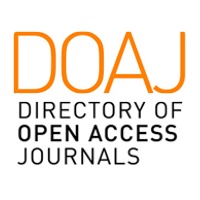INFLU ENCE NITROG EN FERTILIZER ON NUT RITIONAL MO DE PODZOL IZED HA RD CLAY CHO RNOZEM AND YIELDING-CAPASITY CHICKPEA
Keywords:
chickpea, nitrate nitrogen, ammonia nitrogen, nutritional mode, podzolized hard clay chornozem, mineral fertilizer, yielding-capasityAbstract
In this article the results of research effects of different rate of nitrogen fertilizer on nutritional mode podzolized hard clay chornozem of the Right-bank forest-steppe Ukraine and yielding-capasity chickpea seeds.One of the main nutrients for plants are nitrogen. Its deficiency in most soils requires constant of nitrogen fertilizer to produce high yielding-capasity of agriculture crops and improve product quality.The need for application nitrogen fertilizers in growing technology legumes remains controversial. Nitrogen compounds influence the formation and functioning of the legume-ryzobianum complex at all stages of formation and functioning of the symbiosis.No less important is the question of providing highly effective symbiosis with bacteria chickpeas. Therefore, the technology of growing chickpeas agromeasure must be pre-sowing seed treatment biological products selection of appropriate strains of rhizobia. This combined with the optimal rate of mineral fertilizers promotes increase plant productivity. Therefore, the research of the question nutritional mode by a combination of fertilizer and inoculation of chickpea is actual.The aim of the research was to identify influence nitrogen fertilizer on nutritional mode podzolized hard clay chornozem and yielding-capasity chickpea seeds which was inoculated azotfiksuvalnymy bacteria.The research was conducted during 2011 – 2013 years, in terms of a temporary experiment on the experimental field of Uman National University of Horticulture. Soil on the tested plots is podzolized hard clay chornozem.Variety of chickpea Rosanna was sowed after winter wheat. Fertilizers used in the following forms: ammonium nitrate, urea, ammonium sulphate, superphosphate double, potassium chloride, ammonium molybdate. Limestone material – defecate, which two years of exposure CaCO3 content of 70 %. Its application rate calculated by hydrolytic acidity.Phosphate, potash fertilizer and defecate were applied during autumn ploughing, nitrogen fertilizers - during pre-sowing cultivation and leaf nutrition - in the phase of bean formation of chickpeas. Before sowing the seeds were treated with suspension of Ryzobofit (specimen of nodule bacteria Mesorhizobium cicerі made from strain H-12 at the rate of 106 bacteria for a seed).Harvesting and recording of crops of chickpea was carried on each plot by means of direct combine harvesting. Straw yielding-capasity was determined by method of trial sheaf.Established that the early formation of nodules and effective symbiosis in chickpea crop formation participates symbiotic nitrogen. The amount of nitrogen that is needed for maintaining plant growth and development to be included in the process of nitrogen fixation, and provides little soil reserves. For insurance of plants against possible shortages of nitrogen in case of of delay the appearance of nodule bacteria or slow their development in adverse conditions is necessary to apply start rate of nitrogen fertilizer.The greatest influence on the yielding-capasity chickpeas have stocks of mineral nitrogen compounds in the soil layer 0 – 100 cen in its flowering phase and it is independent - were inoculated seeds or not. Tightness of communication between these indicators the coefficient of determination was high (R2 = 0,8).The yielding-capasity of chickpea in the experiment significantly dependent on weather conditions during the growing season, Agrotechnological measures that studied in the experiment and changed from 2,15 to 3,67 t/ha over the three years of the research. Replacement of ammonium nitrate, ammonium sulfate (variant P60K60 + N30S35) promoted the increase chickpea yielding-capasity by 7 % or 0,2 kg/ha. To enhance yielding-capasity of chickpea grain is necessary to conducting a background of liming to apply phosphate and potash fertilizers and handle seeds Ryzobofitom. Conducting inoculated seeds chickpea drugs azotfiksation bacteria and processing of molybdenum fertilizer it should be mandatory to measure agrotechnological on podzolized hard clay chornozem. The start rate of nitrogen fertilizer of 30 kg/ha D.R. is better to use as ammonium sulfate, which will also contribute to improving nutrition chickpea sulfur.In the Right-bank forest-steppe Ukraine nutritional mode podzolized hard clay chornozem and system fertilizing when growing chickpeas should consist of applying of phosphate and potash fertilizers and main cultivation soil in norm 60 kg/ha, D.R. and starting rate of nitrogen fertilizer in the form of ammonium sulfate (30 kg/ha D.R.) in combination with seeds inoculation azotfiksation bacteria and treating its molybdenum fertilizer. Also effective is to carry out liming of acid soils.
References
Бабич Н. Н. Бактеризация – прием повышения производства белка / Н. Н. Бабич // Зерновые культуры. – 1997. – № 3. – С. 19 – 20.
Патика В. П. Агроекологічна оцінка мінеральних добрив та пестицидів / В. П. Патика, Н. А. Макаренко, Л. І. Моклячук і ін. – К.: Основа, – 2005. – 300 с.
Cічкар В. Технологія вирощування нуту в Україні / В. Cічкар, О. Бушулян // Пропозиція. – 2001. – № 10. – С. 42 – 43.
Бутвина О. Ю. Высококонкурентные штаммы клубеньковых бактерий – основа эффективности биопрепаратов / О. Ю. Бутвина, Н. З. Толкачев, А. В. Князев // Мікробіологічний журнал. – 1997. – Т. 59, № 4. – С 123 – 131.
Дідович С. В. Вплив мінерального азоту на ефективність симбіозу нуту (Сісеr аrіеntinum L.) з Mesorhizobium ciceri / С. В. Дідович, С. І. Портянко, О. М. Дідович // Тези наук. конф. молодих учених (Ужгород, 1 – 3 грудня 2005 р.). – Ужгород, 2005. – С. 48 – 49.
Радовня В. А. Влияние азотных удобрений на рост, развитие и урожайность озимого рапса в условиях Полесской зоны Беларуси / В. А. Радовня, С. П. Остапович, В. Н. Шлапунов // Земледелие и селекция в Беларуси: сб. науч.тр / НАН Беларуси, Науч. Cпракт. Центр НАН Беларуси по земледелию. – Минск. 2006. – Вып. 44. – С. 40 – 49.
Гамзиков Г. П. Баланс и превращение азота удобрений / Г. П. Гамзиков, В. Н. Емельянова – Новосибирск : Наука, 1985. – 160 с.
Возбуцкая А. Е. Химия почвы / А. Е. Возбуцкая. – М. : Высшая школа, 1968. – 418 с.
Носко Б. С. Азотний режим ґрунтів і його трансформація в агроекосистемах. Національний науковий центр «Інститут ґрунтознавства та агрохімії імені О. Н. Соколовського». / Б. С. Носко - Харків. : «Міськдрук», 2013. – 130 с.
Новоселов С. И. Экспресс-метод определения нитратного азота в почве / С. И. Новоселов, А. А. Завалин // Агрохимия. – 1996. – № 6. – С. 96 – 102.
Хавкин Е. Е. Диагностика азотного питания сельскохозяйственных растений / Е. Е. Хавкин // Обзорная информация ВАСХНИЛ. – М.: Колос, 1984. – 90 с.
Крикунец В. М. Зависимость урожая сои от дозы азота удобрения / В. М. Крикунец // Агрохимия. – 1990. – № 12. – С. 31 – 38.
Синицький О. М. Економетрія : навч. посіб. / О. М. Синицький, О. Я. Батюк. – Львів : Сполом, 2011. – 210 с.
Кореньков Д. А. Минеральные удобрения и их рациональное применение / Д. А. Кореньков – М.: Россельхозиздат, 1973. – 176 с.
Никитишен В. И. Факторы, обусловливающие последействие азотных и фосфорных удобрений / В.И. Никитишен // Плодородие. – 2004. – № 2. – С. 18 − 21.








